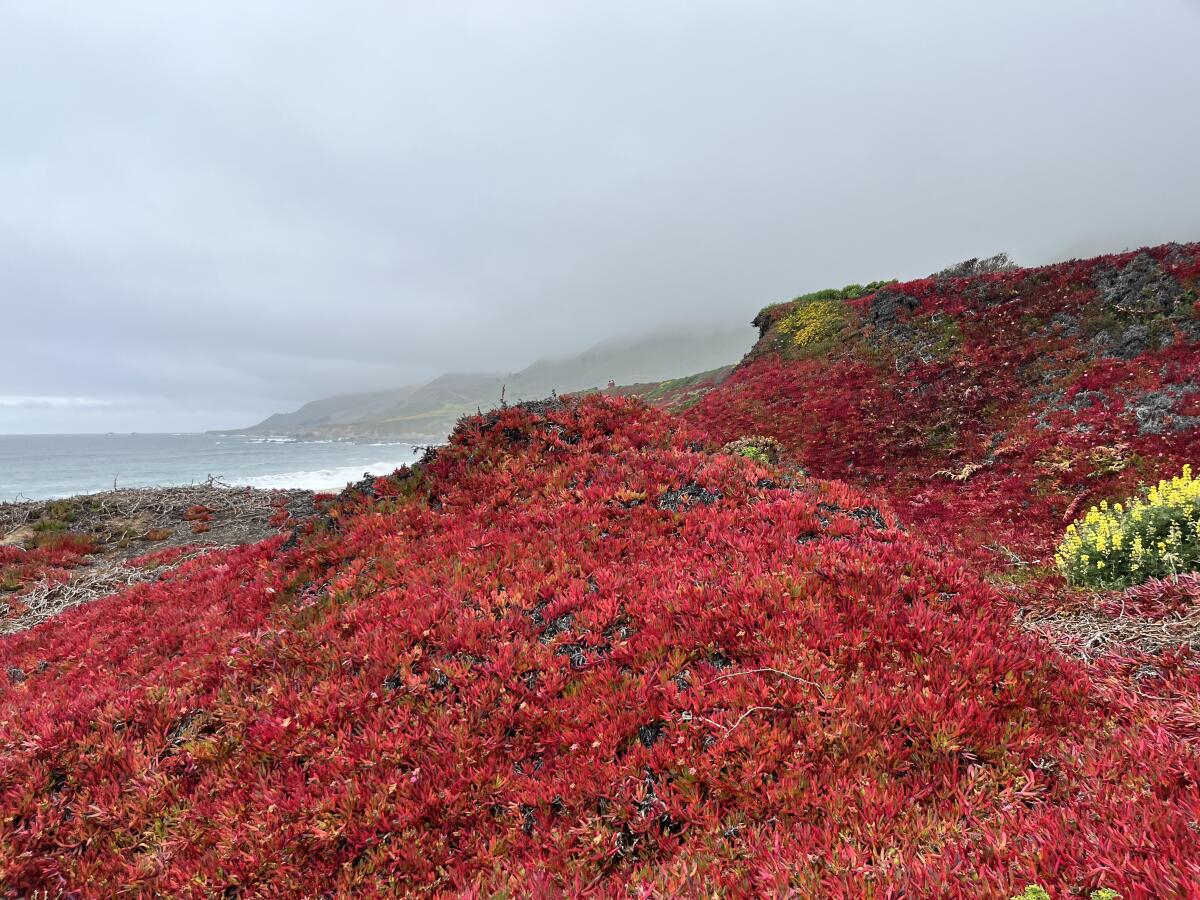Pro-gun groups take aim at California’s nation-leading data collection

- Share via
Good morning, and welcome to the Essential California newsletter. It’s Wednesday, July 26.
California is widely considered to have the strongest gun laws in the nation. But it’s not only restrictions that put the Golden State at the forefront of our country’s conversations around guns.
California’s reputation is also built on decades of considerable data-collecting infrastructure and a willingness to share much of that data with researchers seeking to understand the root causes of gun violence.
But as Times politics reporting intern Owen Tucker-Smith wrote this week, that growing field of research is now in jeopardy.
For years, the Golden State was uniquely positioned at the forefront of the nation’s gun violence research. In 1996, a law backed by the National Rifle Assn. banned the use of federal funding for such projects. But that changed in 2019, when Congress approved $25 million annually for the Centers for Disease Control and Prevention and the National Institutes of Health to study gun violence and research expanded dramatically.
House Republicans now have set their sights on the federal allotment as they square off with Democrats over appropriations bills, aiming to quash any and all spending on gun violence research. At the same time, gun-rights activists in California are challenging the state’s data-sharing laws, which had enabled so much research during the federal ban.
“Scientists have only begun to understand the factors that put Americans at risk of firearm injury,” Owen wrote. “The double blow of ending federal funding and cutting off researchers’ access to California’s data could set the field back years.”
Researchers in California are already feeling the impact of those efforts. In October, those gun-rights activists won an injunction that blocks the state from enforcing its law that requires the sharing of state gun transaction data with researchers. That’s left researchers unable to access up-to-date firearm transactions data in the state.
California’s array of data on gun ownership has given researchers the ability to study the effectiveness of certain gun laws — which Owen notes is a rarity in the U.S., “where the vast majority of gun laws are not supported by evidence.”
For example, one team of researchers did a before-and-after analysis of Californians convicted of violent misdemeanors. The first group tried to buy firearms before a California law that prohibited them from doing so; the second group were people with the same misdemeanor convictions who tried to buy guns after the rule took effect.
Group 2 — those not allowed to purchase firearms — had a 25% lower rate of subsequent arrest.
“That finding suggested that California’s decision to block people convicted of violent misdemeanors from owning guns made them less likely to commit violent crimes in the future,” Owen wrote.
Shocking no one, the NRA and other gun industry interest groups are not fans of gun violence research, Owen notes, and “consistently oppose efforts to provide academics with data on gun violence, know[ing] that their political efforts hinder potentially useful research.”
The battle over the fate of this research is playing out as gun deaths have soared in the U.S. CDC data show deaths dropped slightly in 2022 compared with 2021 — which stands as the year with the most gun deaths on record — but remain higher than pre-pandemic levels.
As the most populous state in the nation, the total number of people killed by firearm injuries in California remains high — and the state was not immune to the pandemic surge. But California’s gun death rate (deaths per 100,000 residents) is now one of the 10 lowest among U.S. states, which leaders credit to stronger gun laws enacted over the last couple of decades. Texas, Florida and other GOP-controlled states saw those rates climb in that time.
And now, here’s what’s happening across California:
Note: Some of the sites we link to may limit the number of stories you can access without subscribing.
L.A. STORIES
Firefighters were busy in the Santa Clarita Valley on Tuesday as multiple brush fires broke out around the area. The largest blaze, dubbed the Agua fire, had burned an estimated 100 acres and was 0% contained as of Tuesday evening. Los Angeles Times
A large crack in a bluff above Pacific Coast Highway in Santa Monica has officials concerned that big chunks of packed soil could topple onto the iconic roadway. City officials said they’d close part of PCH on Tuesday night to remove the precarious portions. Los Angeles Times
POLITICS AND GOVERNMENT
Shasta County leaders have dug battle lines in the ongoing debate over gun control. The Northern California county’s Board of Supervisors approved a resolution this week declaring the local government will “use all lawful means at its disposal to support and defend the Second Amendment.” Los Angeles Times
Steve Austin has the Stone Cold Stunner, and in California’s political ring, Gov. Gavin Newsom has his own signature move: the Legislative Jam. My colleague Taryn Luna reports: “Newsom has a penchant for publicly manufacturing a sense of urgency and giving lawmakers as little time as possible to act.” Los Angeles Times
JUSTICE AND POLICING
A Black mother punched by Palmdale sheriff’s deputies during a traffic stop last July has filed a federal lawsuit against the Los Angeles County Sheriff’s Department, accusing deputies of excessive force and wrongful arrest. Body-cam footage released this month showed the woman holding her baby as she refuses demands that she let go of the child so deputies can arrest her. Deputies used force to pry the child from the mother and booked her for felony child endangerment, though she was not ultimately charged with that felony. Los Angeles Times
Women incarcerated at California’s largest female-only prison say cooling systems at the facility failed, creating hazardous conditions as the high heat continues to bear down on the region. One woman who spoke to a Sacramento Bee reporter said her cell hit 94 degrees for three straight days last week. The Sacramento Bee
Support our journalism
HEALTH AND THE ENVIRONMENT
Hot days could be raising more than thermometers. According to a study from the Washington Center for Equitable Growth, workplace injuries also rise on days with higher temperatures. Researchers linked hot temperatures to roughly 20,000 workplace injuries each year, saying the risks are greatest for low-wage workers. CalMatters
Times columnist Patt Morrison pours out some historical context on the reemerged lakes that California’s thirsty cities and farms tapped out over the last century or so. After major winter storms brought these “zombie lakes” back to life, Native American tribes and some environmental advocates hope they’ll remain. Los Angeles Times
Free online games
Get our free daily crossword puzzle, sudoku, word search and arcade games in our new game center at latimes.com/games.
AND FINALLY
Today’s California landmark is from Sharon Herbert, all the way from Perth, Australia: the rich coastal scenery along Pacific Coast Highway.

Sharon writes:
I’d been to a family wedding in Northern California and did a tiki tour on the way back to San Diego. I drove down [PCH] as the weather became increasingly wet and gray. It was spectacular and the wildflowers blew me away. I will be back. 🙂
What are California’s essential landmarks? Fill out this form to send us your photos of a special spot in California — natural or human-made. Tell us why it’s interesting and what makes it a symbol of life in the Golden State. Please be sure to include only photos taken directly by you. Your submission could be featured in a future edition of the newsletter.
Please let us know what we can do to make this newsletter more useful to you. Send comments to essentialcalifornia@latimes.com.
Sign up for Essential California
The most important California stories and recommendations in your inbox every morning.
You may occasionally receive promotional content from the Los Angeles Times.







